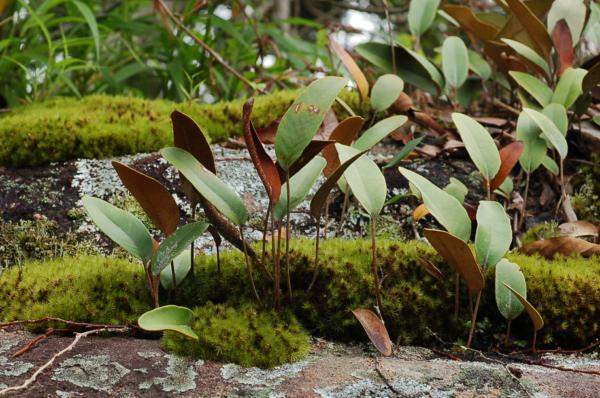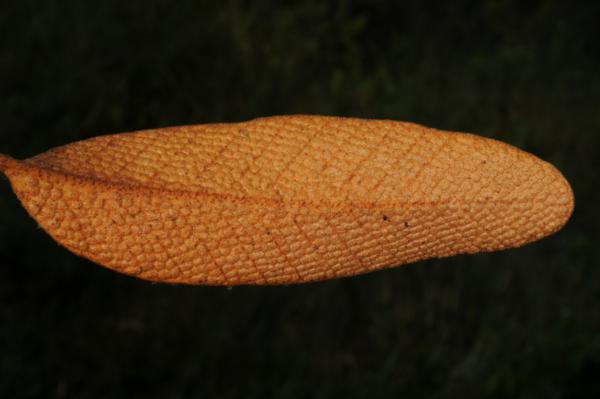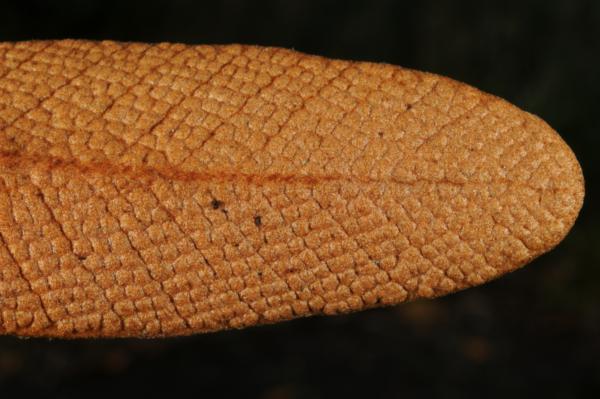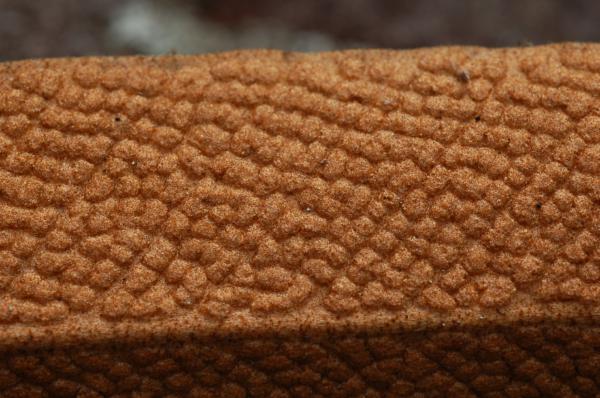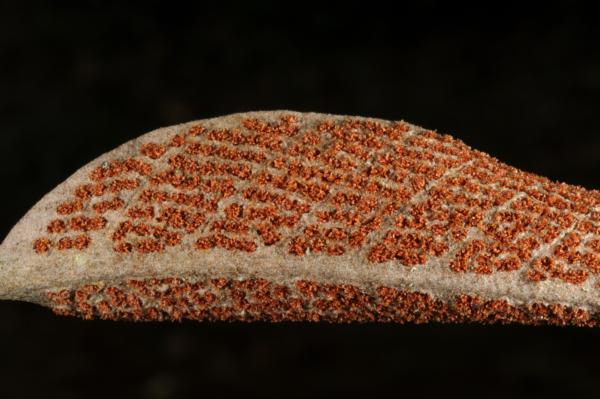
Pyrrosia lingua (Thunb.) Farw. var. heteractis (Mett. ex Kuhn) Hovenkamp
Family
Polypodiaceae
Nomenclature
Pyrrosia lingua (Thunb.) Farw. var. heteractis (Mett. ex Kuhn) Hovenkamp, Blumea 30: 208. 1984; Hovenkamp, Leiden Bot. Ser. 9: 206. 1986; Boonkerd & Pollawatn, Pterid. Thailand: 286. 2000. – Polypodium heteractis Mett. ex Kuhn, Linnaea 36: 140. 1869. – Niphobolus heteractis (Mett. ex Kuhn) J.Sm., Ferns Brit. For., ed. 2: 296. 1877; Bedd., Handb. Ferns Brit. India: 327. 1883. – Cyclophorus heteractis (Mett. ex Kuhn) C.Chr., Index Filic. 99. 1905. – Pyrrosia heteractis (Mett. ex Kuhn) Ching, Bull. Chin. Bot. Soc. 1: 57. 1935; Tagawa, J. Jap. Bot. 38: 327. 1963; Tagawa & K.Iwats., Fl. Thailand 3: 506, f. 50.11–12. 1989.
Cyclophorus eberhardtii Christ, J. Bot. France 21: 237, 270. 1908. – Pyrrosia eberhardtii (Christ) Ching, Bull. Chin. Bot. Soc. 1: 59. 1935; Tardieu & C.Chr., Fl. Indo-Chine 7(2): 507. 1941; Tagawa & K.Iwats., SouthE. Asian Stud. 5: 48. 1967; Tagawa & K.Iwats., Fl. Thailand 3: 505, f. 50.9–10. 1989.
Cyclophorus heteractis var. minor C.Chr., Contr. U.S. Natl. Herb. 26: 335. 1931. – Pyrrosia heteractis (Mett. ex Kuhn) Ching var. minor (C.Chr.) Ching, Bull. Chin. Bot. Soc. 1: 58. 1935; Tagawa & K.Iwats., Fl. Thailand 3: 507. 1989.
Description
Rhizome long creeping, 2–3.5 mm diam., bearing fronds 1.5–5 cm apart, scaly throughout; scales appressed or patent at least in the upper part especially in younger portion, narrowly subtriangular, lanceolate or oblong-lanceolate, apex attenuate, up to 7 by 1.5 mm, usually bi-coloured with nearly black basal and central portion and brown marginal portions, bearing long downy hairs at margin of apical portion. Fronds simple. Stipes 1–30 cm long, scaly at base with those like rhizome scales, densely hairy throughout with greyish ferrugineous hairs and dark stellate hairs. Laminae oblong-lanceolate, oblong, ovate or elliptic, apex round to acuminate, rounded to decurrent at base, 3–22 by 2–7 cm, coriaceous, the margin of fronds often involute, fertile fronds hardly different or a little taller; midrib and main veins distinct, raised beneath, other veins hardly visible, anastomosing; rigidly coriaceous, upper surface stellate hairy or glabrescent, with scattered hydathodes, the lower surface densely covered with hairs in two kinds, the lower layer grey ferrugineous hairs and needle-like arms. Sori round, distinct, scattered on all the lower surface or in upper part of it, embedded in stellate hairs, not confluent .
Distribution in Thailand
NORTHERN: Chiang Mai, Chiang Rai, Tak, Phitsanulok; NORTH-EASTERN: Loei; SOUTH-WESTERN: Kanchanaburi, Phetchaburi, Prachuap Khiri Khan; CENTRAL: Nakhon Nayok; SOUTH-EASTERN: Chanthaburi, Trat; PENINSULAR: Ranong, Phangnga, Nakhon Si Thammarat, Trang.
Distribution in Laos
Salavan.
Distribution in Cambodia
Kampot, Kompong Chhnang.
Wider Distribution
N India, Nepal, Bhutan, S China, Burma, Cambodia, Laos, Vietnam.
Ecology
On rocks or on tree trunks in exposed places, in light shade or in rather dense forests at various elevations, rather common throughout Thailand.
Proposed IUCN Conservation Assessment
Least Concern (LC). This variety is widespread and not under any known threat.
Voucher specimens - Thailand
Middleton et al. 5067, Phitsanulok, Phu Hin Rong Kla National Park (E).
Habit
Lower frond surface
Frond apex
Sori
Old sori
Site hosted by the Royal Botanic Garden Edinburgh. Content managed by Stuart Lindsay, Gardens by the Bay, Singapore and David Middleton, Singapore Botanic Gardens. Last updated 24 January 2012
